| Lepadella ovalis., dorsal view, focus plane on the red eyespots. (1) |
| |
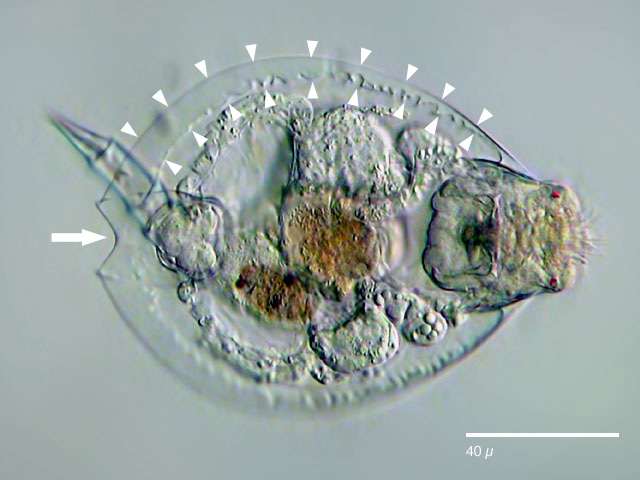 |
| Lepadella ovalis; dorsoventral view. In contrast to Lepadella patella the crossection of the lorica is rather flat, so that the inner organs do not touch the lateral rims of the lorica. Instead there is a lateral field called "area" extending from the head opening to the foot opening (marked by arrowheads). The arrow points to the indented dorsal foot opening. (1) |
| |
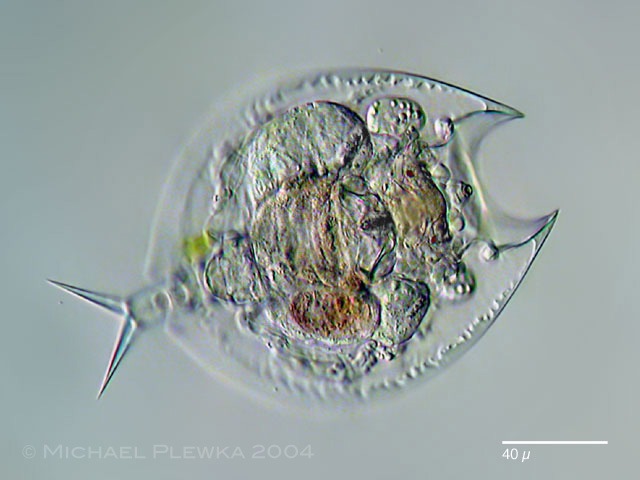 |
| Lepadella ovalis, same specimen with retracted head. (1) |
| |
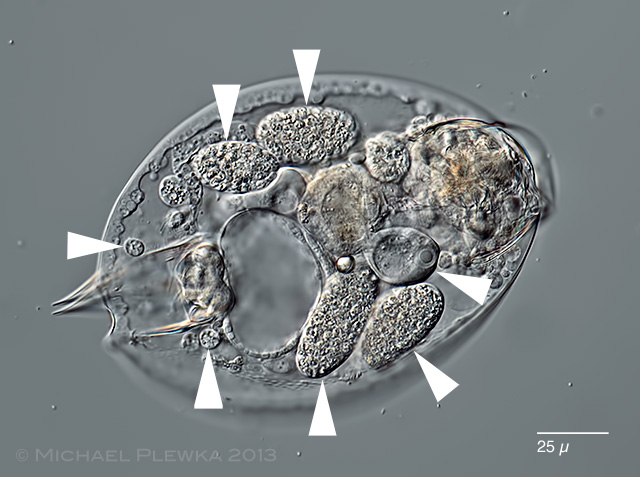 |
| Lepadella ovalis, specimen with parasites. |
| |
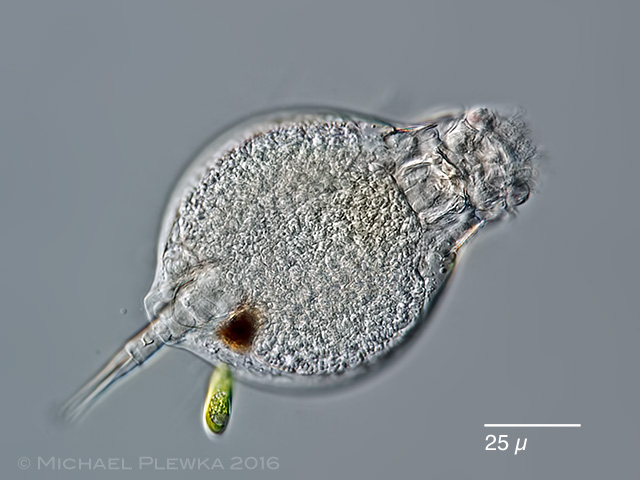 |
| Lepadella ovalis, specimen with parasites. |
|
|
| |
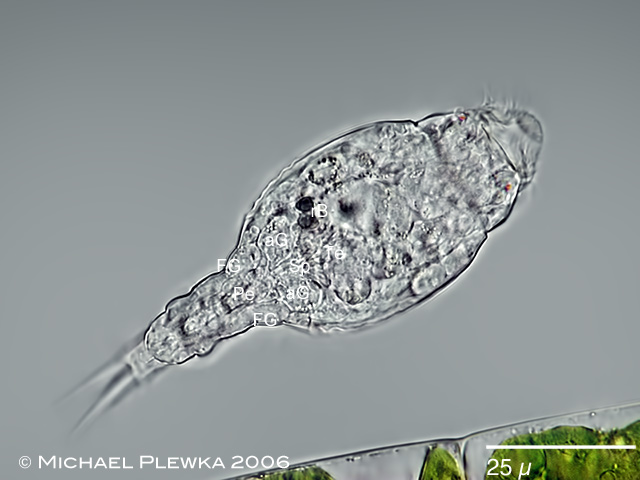 |
| Lepadella ovalis, male specimen. In the males the digestive system is reduced; aG: accessory (prostrate) glands; of FG: foot glands; Pe (retracted) penis; rB: light refracting bodies with nutritive function (because in the males the digestive system is reduced, i.e. they do not have trophi, the cannot uptake external energyy resources); ; Sp: spermatozoa; Te: testis. |
| |
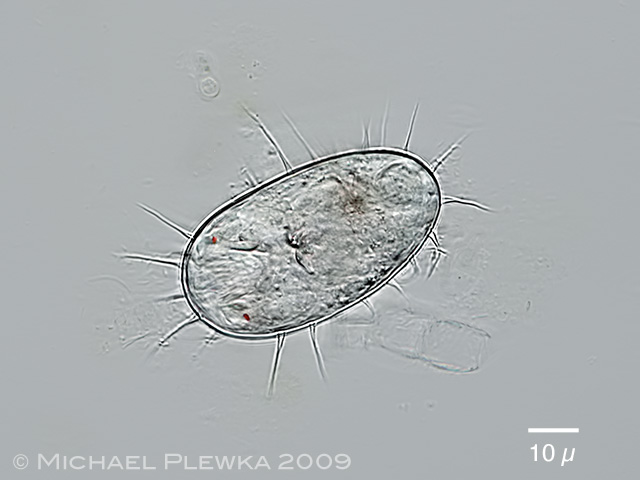
|
| Lepadella ovalis, amictic egg. (26.04.2009). Because of the spines the amictic egg of this species maybe confused with the amictic egg of Synchaeta pectinata, but the spines are bifurcate at the base, whereas in Synchaeta the spines are bifurcate at the top. |
| |
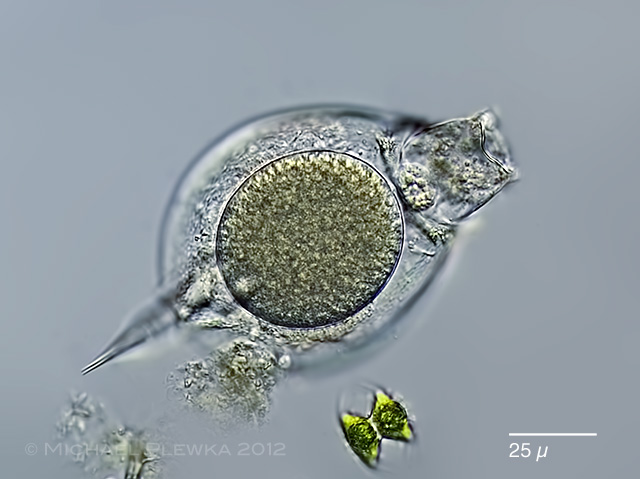 |
| Lepadella ovalis, resting egg. While in most monogonont rotifer species the resting eggs are deposited by the mother and survive, in some species the resting egg remains in the mother when she dies like in the example above or in Lecane-species. (3) |
| |
| Location: Gevelsberg, Grünes Klassenzimmer; pond (1);(2) |
| Habitat: Periphyton (1);(2) |
| Date: 02.05.2004 (1); 09.03.2006 (2) |
| |
|
|
|